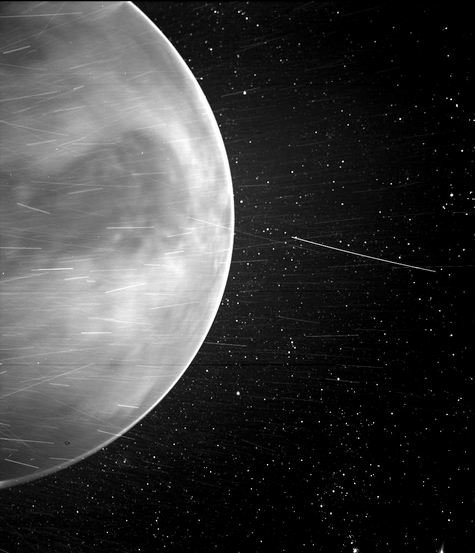Even if the Parker Solar Probe has begun its journey to the Sun recently, it has already offered a great deal of data.
Thanks to one of the probe’s cameras, the Wide-field Imager for Parker Solar Probe, or WISPR, we have now a glimpse of Venus! Shot from 12,380 km (7,693 miles) away, the striking photo shows the planet’s nightside.
Here is what you need to know.
WISPR Captures Venus’ Surface in Infrared Light
According to NASA, Venus has a significant role in Parker Solar Probe’s mission. The probe will fly past the planet seven times throughout its seven-year journey. It will also use Venus for a gravity assist.Â
So, it’s no surprise that the mission scientists expected the spacecraft’s camera to take as many shots as possible of Venus. The thing is that scientists didn’t think WISPR will succeed to capture such a striking image, because Venus’ thick carbon dioxide clouds.
Venus in the spotlight
WISPR successfully saw through the thick clouds, unveiling a dark shade of Aphrodite Terra, a highland region nearby Venus’ equator. But why the dark shade?
Unfortunately, the feature is dark because there’s only 30 degrees Celsius (85 degrees Fahrenheit) cooler than its surroundings. You can see the full image below.

Some bright stripes also appear in the shot due to a mix of charged particles (cosmic rays), particles of material discharged from the probe’s structures after impact with dust bits, and sunlight reflected by grains of space dust.Â
According to scientists, the number of stripes might vary. Their specific origins are still unknown.
WISPR’s features
WISPR can capture shots of the solar corona and inner heliosphere in visible light. But that’s not all.
The camera can take photos of the solar wind and its structures, as well. At Venus, for instance, WISPR detected a light rim around the edge of the planet that may be nightglow, which intrigues scientists.
This surprising observation made the WISPR team to examine more the camera’s sensitivity to infrared light. And if WISPR can really view infrared, it can offer a great deal of new data for future missions.












Leave a Reply